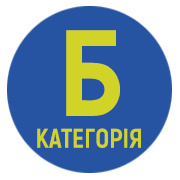MORALITY AND PUBLIC ORDER AS A CONDITION OF PATENTABILITY OF BIOTECHNOLOGICAL INVENTIONS IN THE FIELD OF MEDICINE: EUROPEAN EXPERIENCE
DOI:
https://doi.org/10.51989/NUL.2021.4.42Keywords:
biomedical technologies, inventions in the field of biomedical technologies, patentability of inventions in the field of biomedical technologies, conditions of patentability of inventions in the field of biomedical technologies, morality, public order, human dignityAbstract
The article is devoted to the study of problematic issues of application of such a condition of inventions patentability in the biomedical technologies field as compliance with moral norms and public order. It has been emphasized that due to the rapid development of biomedical technologies, accompanied by their patenting, on the one hand, and the need to protect people, their rights and dignity from the negative impact of the latter, on the other hand, the study of problematic issues of patentability becomes extremely important. The aim of the article was to study such evaluation categories as morality and public order in the context of biomedical technologies patenting and to define criteria that would allow to determine which invention meets the studied condition of patentability and which does not, and to establish an approximate list of biomedical technologies, which do not meet the studied patentability condition. Based on the analysis of international and regional legal acts, as well as the practice of law enforcement agencies, in particular, the European Union Court of Justice and the European Patent Office, two criteria have been established for compliance of inventions with norms of morality and public order, namely, primary (causing no harm to human life and health) and secondary (consistency of human dignity). Special attention has been paid to the study of the secondary criterion and such an ethical and legal category as human dignity, as the lack of a human dignity term clear definition and its high degree of evaluation significantly complicate the process of establishing the inventions conformity to the investigated patentability condition. Moreover, an approximate list of biomedical technologies that do not meet the studied condition has been defined, which will greatly facilitate the process of establishing the conformity of inventions in the biomedical technologies field to the norms of morality and public order.
References
Этические принципы геномики. Бюллетень медицинских интернет-конференций /С. Ворфоломеев и др. 2017. Том 7. № 6. URL: https://cyberleninka.ru/article/n/eticheskieprintsipy-genomiki/viewer
Угода про торговельні аспекти прав інтелектуальної власності від 15.04.1994 року. URL: https://zakon.rada.gov.ua/laws/show/981_018#Text
Загальна декларація про геном людини та права людини від 11.11.1997 року. URL: https://zakon.rada.gov.ua/laws/show/995_575#Text
Звіт департаменту етики науки та техніки ЮНЕСКО, опублікований в липні 1999 року. URL: http://www.unesco-chair-bioethics.org/wp-content/uploads/2015/05/119390eo.pdf
Конвенція про захист прав і гідності людини щодо застосування біології та медицини: Конвенція про права людини та біомедицину від 04.04.1997 року. URL: https://zakon.rada.gov.ua/laws/show/994_334#Text
Додатковий протокол до Конвенції про захист прав і гідності людини щодо застосування досягнень біології та медицини, стосовно заборони клонування людських істот від 12.01.1998 року. URL: https://zakon.rada.gov.ua/laws/show/994_526#Text
Велика українська юридична енциклопедія / В.О. Абашнік та ін. ; редкол. 2-го т.: С.І. Максимов (голова) та ін. Харків : Право, 2017. Т. 2: Філософія права. 1127 с.
Директива Європейського Парламенту та Ради Європейського Союзу про правову охорону біотехнологічних винаходів від 06.06.1998 року. URL: https://eur-lex.europa.eu/legalcontent/EN/TXT/?uri=celex%3A31998L0044
Рішення великої палати Суду Європейського Союзу у справі Oliver Brüstle v Greenpeace eV від 18.10.2011 року. URL: http://curia.europa.eu/juris/liste.jsf?language=en&num=C-34/10
Рішення великої палати Суду Європейського Союзу у справі International Stem Cell Corporation v Comptroller General of Patents, Designs and Trade Marks від 18.12.2014 року. URL: http://curia.europa.eu/juris/liste.jsf?num=C-364/13
Рішення Суд Європейського Союзу у справі Kingdom of the Netherlands v European Parliament and Council of the European Union від 09.10.2001 року. URL: http://curia.europa.eu/juris/liste.jsf?language=en&num=C-377/98
Рішення апеляційна палата Європейської патентної організації № G 0002/06 від 25.11.2008 року. URL: https://www.epo.org/law-practice/case-law-appeals/recent/g060002ex1.html
Конвенцією про видачу європейських патентів від 05.10.1973 року. URL: https://www.epo.org/law-practice/legal-texts/epc.html
Методичні рекомендації проведення експертизи заявок Європейським патентним відомством від 1 червня 1978 року. URL: http://documents.epo.org/projects/babylon/eponet.nsf/0/8654640290C2DBE7C12584A4004D2D9A/$File/epo_guidelines_for_examination_2019_hyperlinked_en.pdf
Рішення апеляційної палати Європейської патентної організації № T 2221/10 від 04.02.2014 року. URL: https://www.epo.org/law-practice/case-law-appeals/recent/t102221eu1.html



